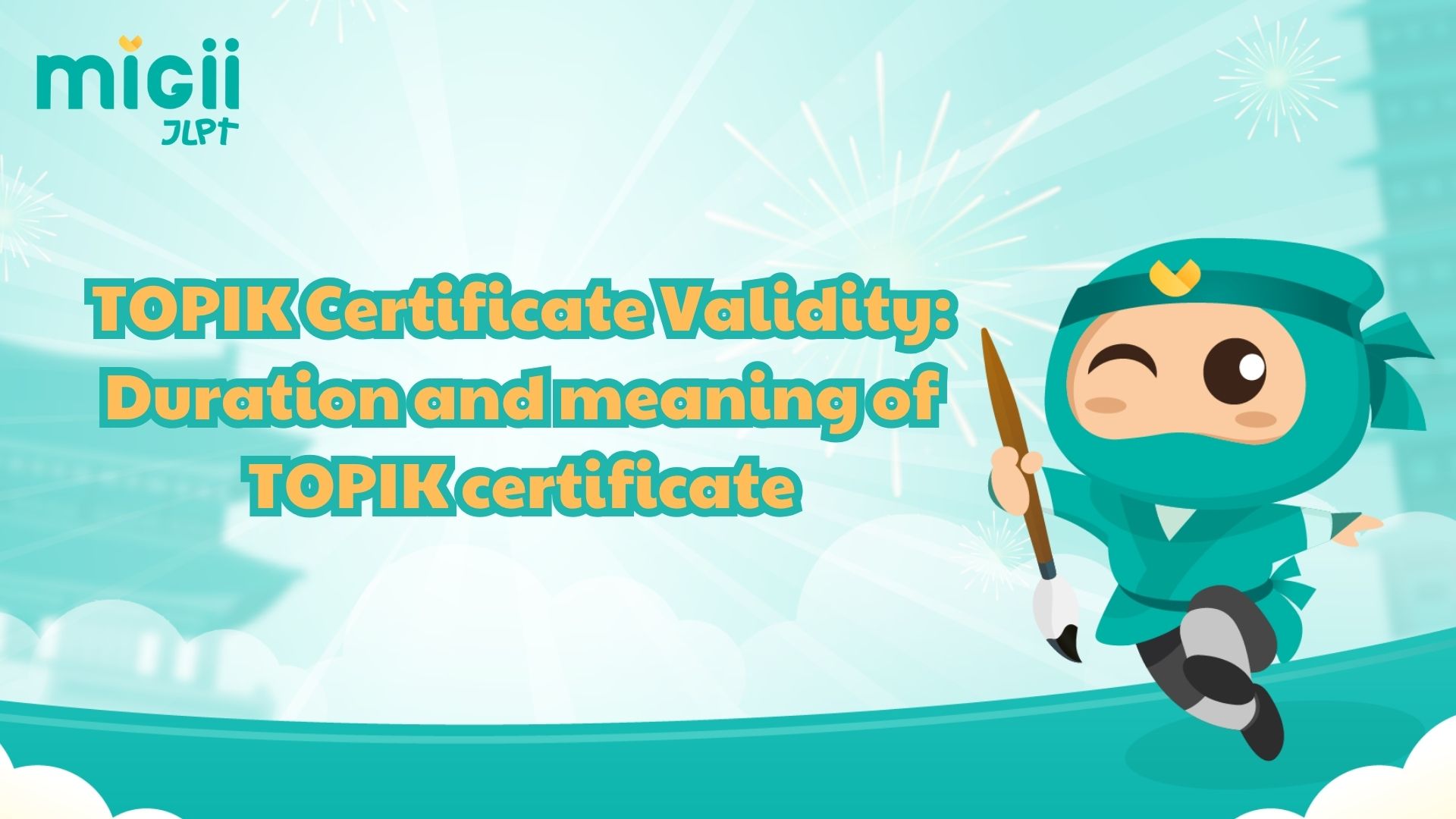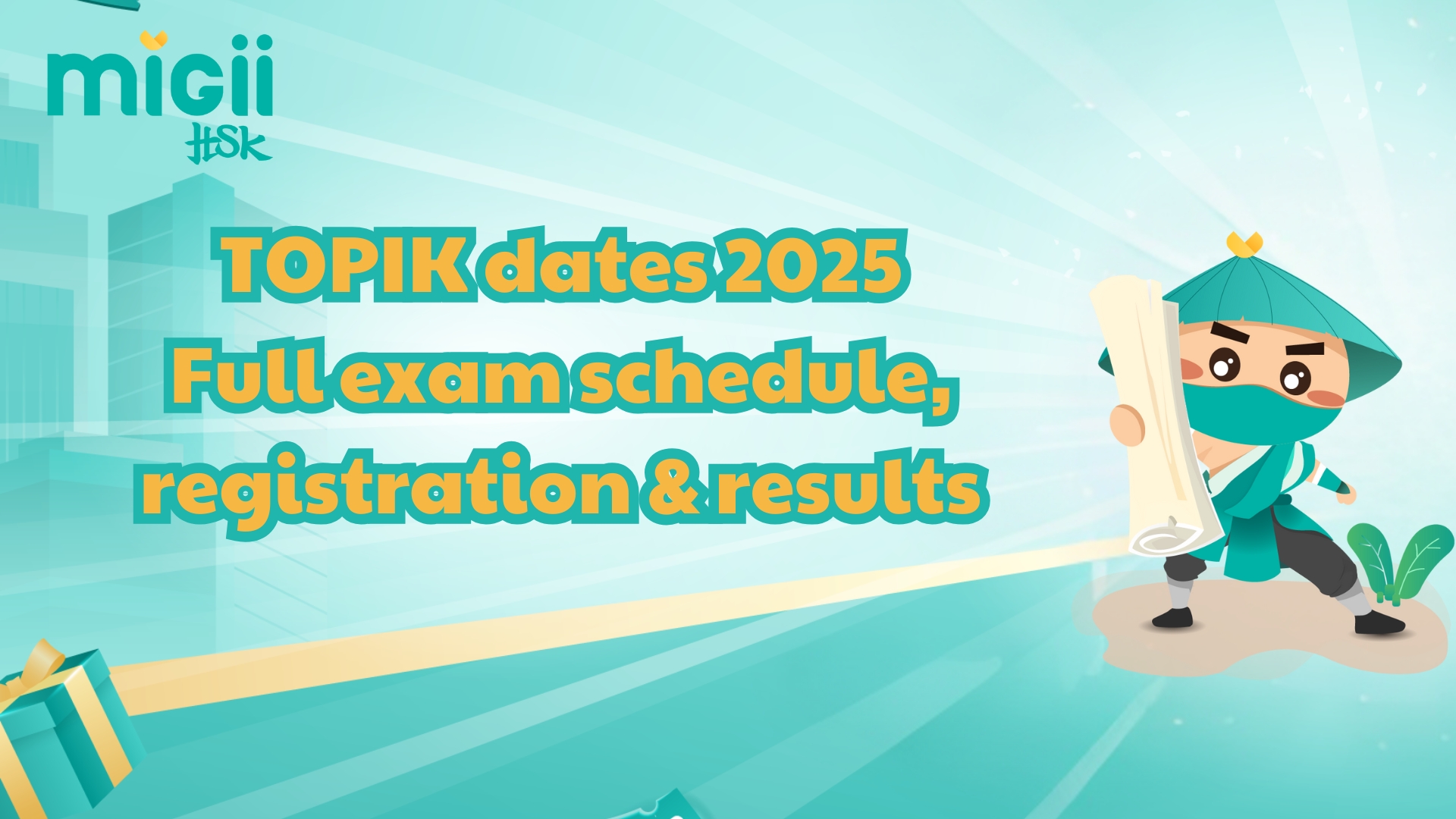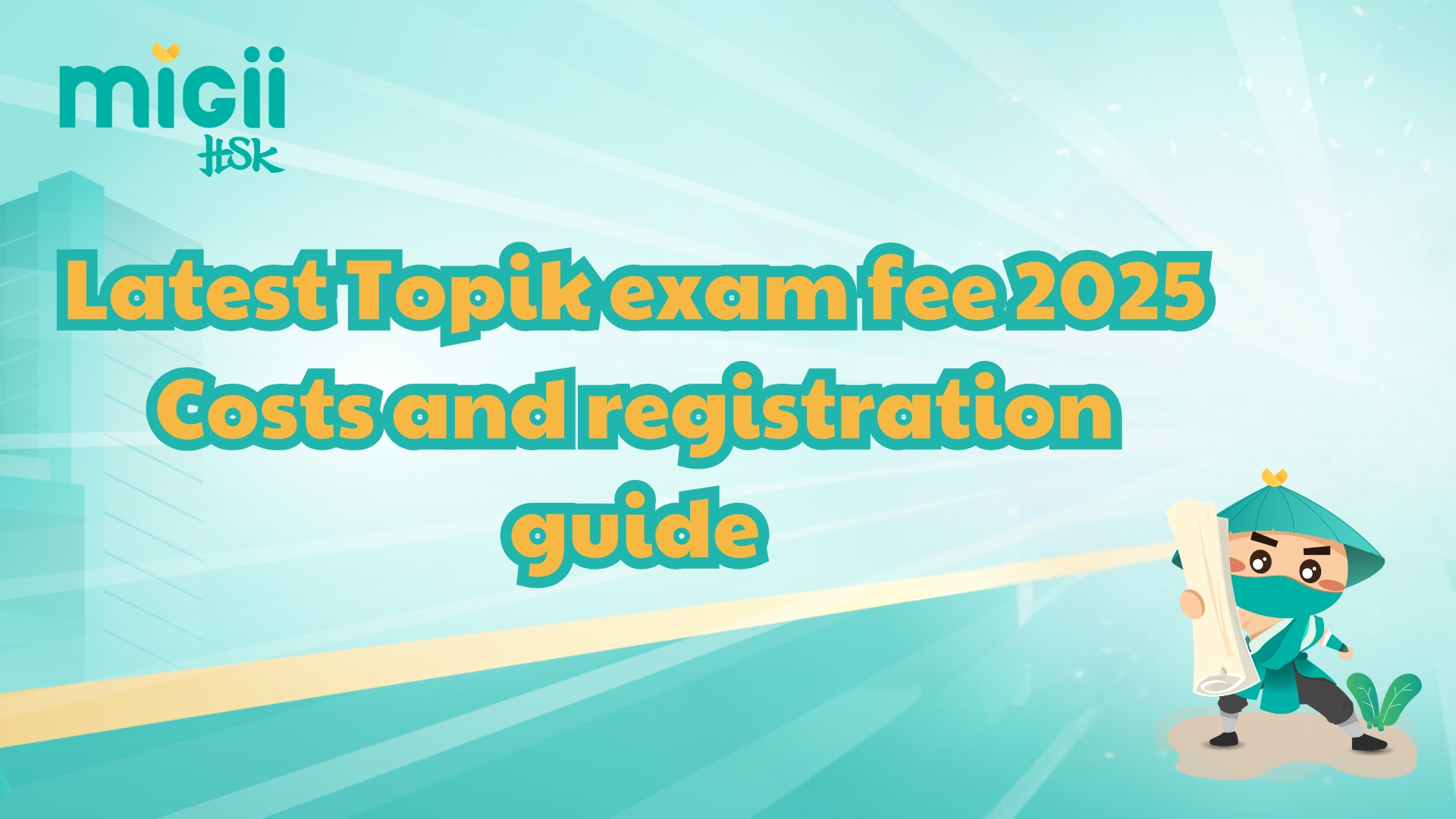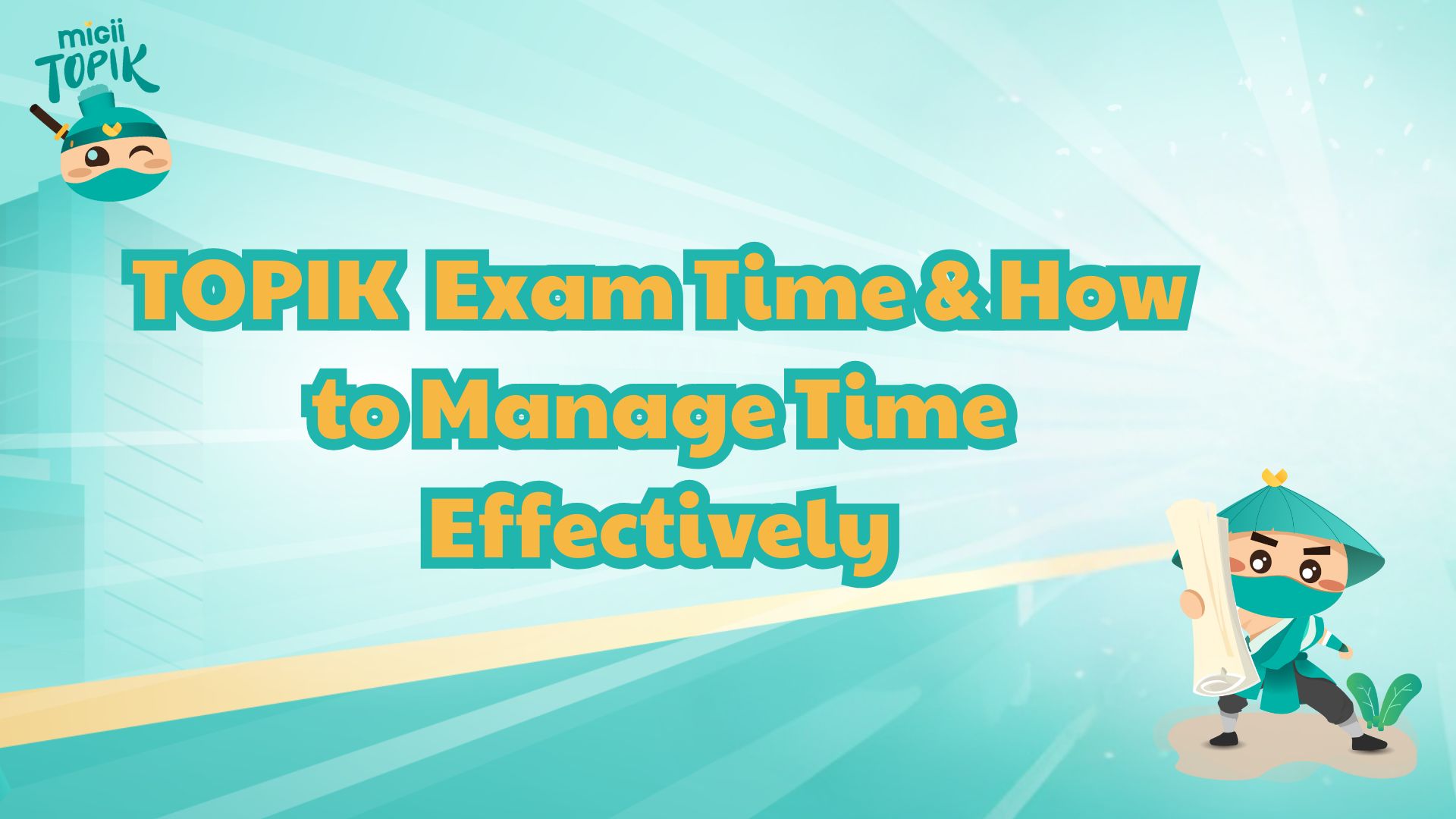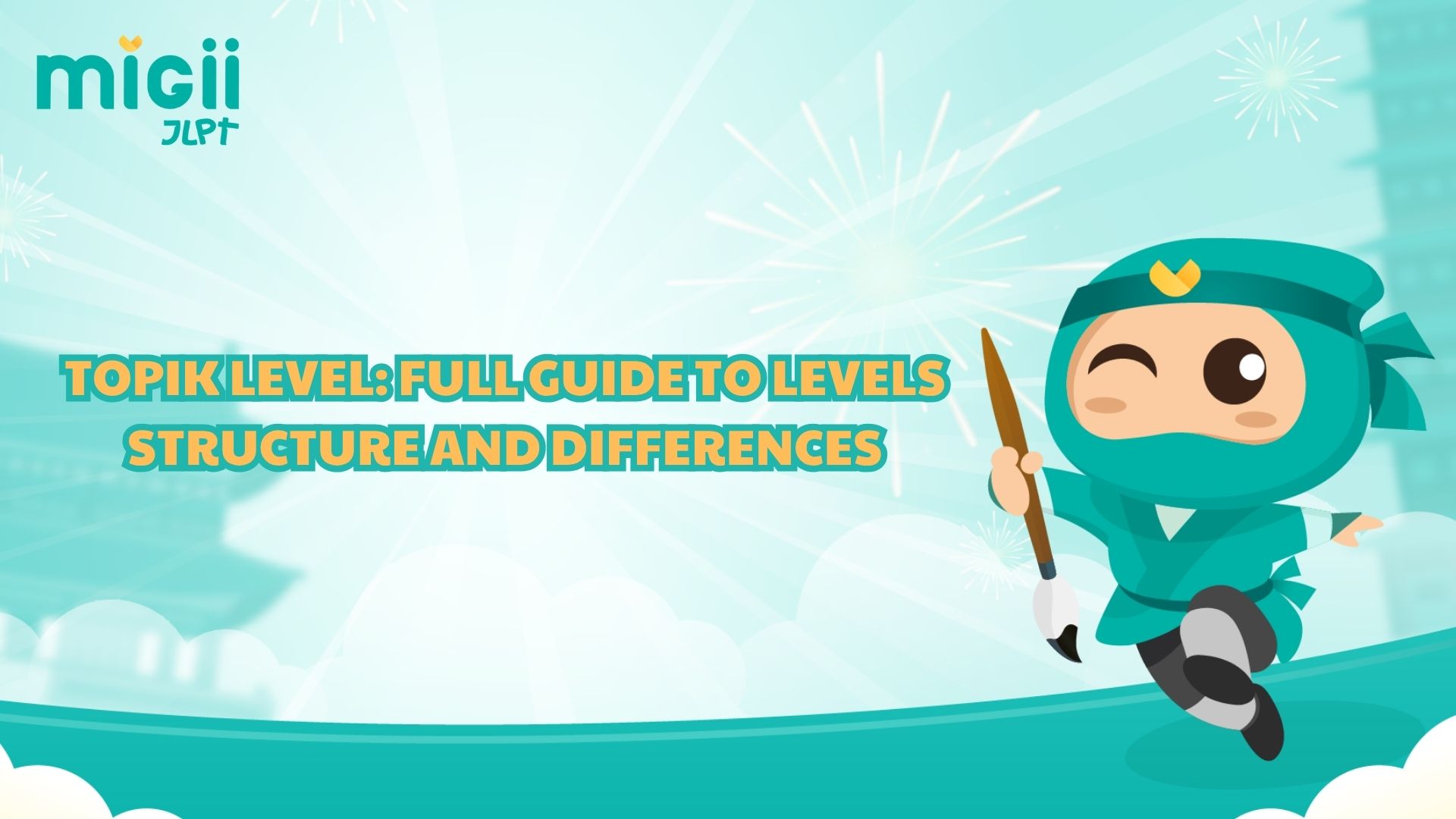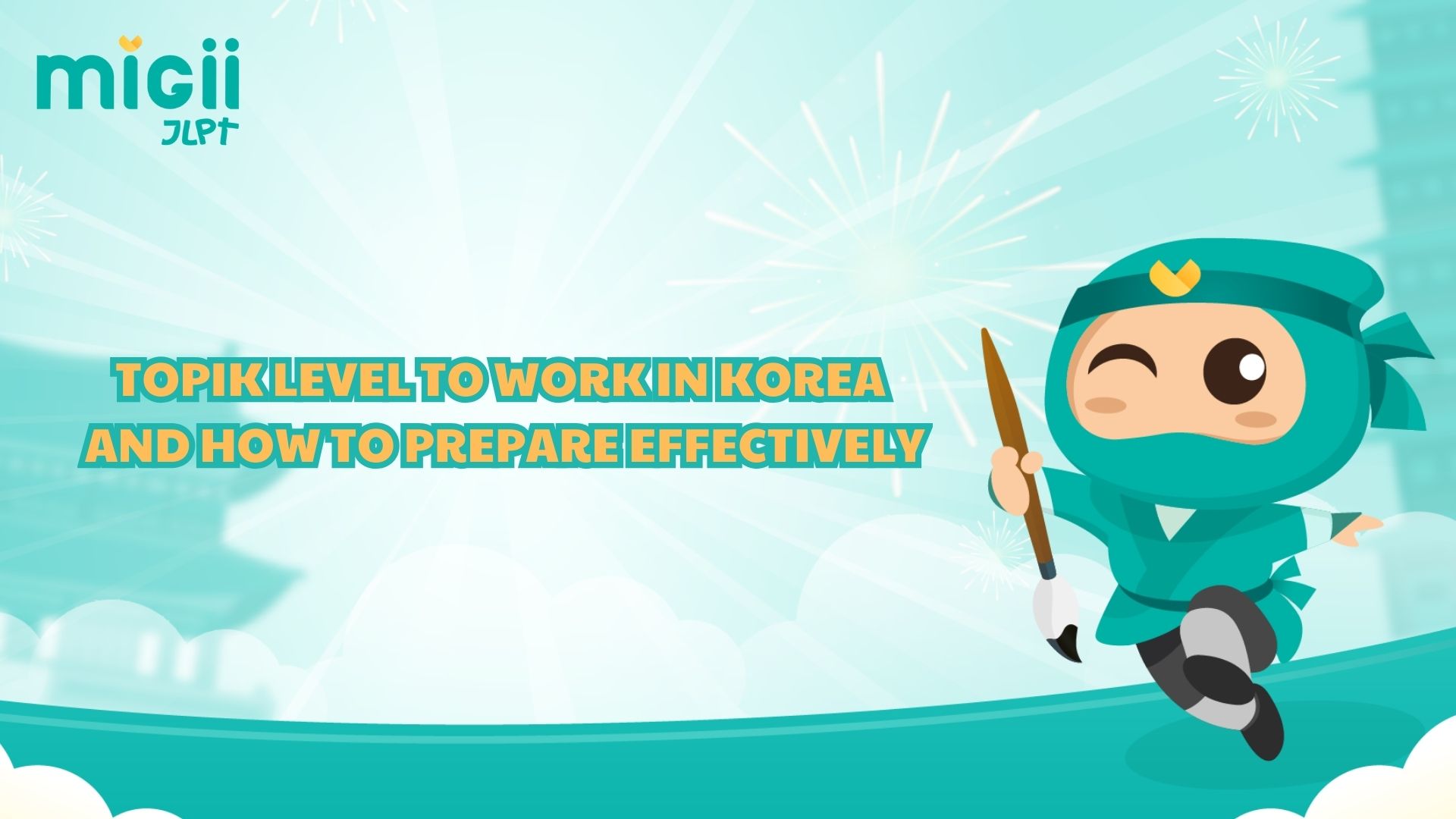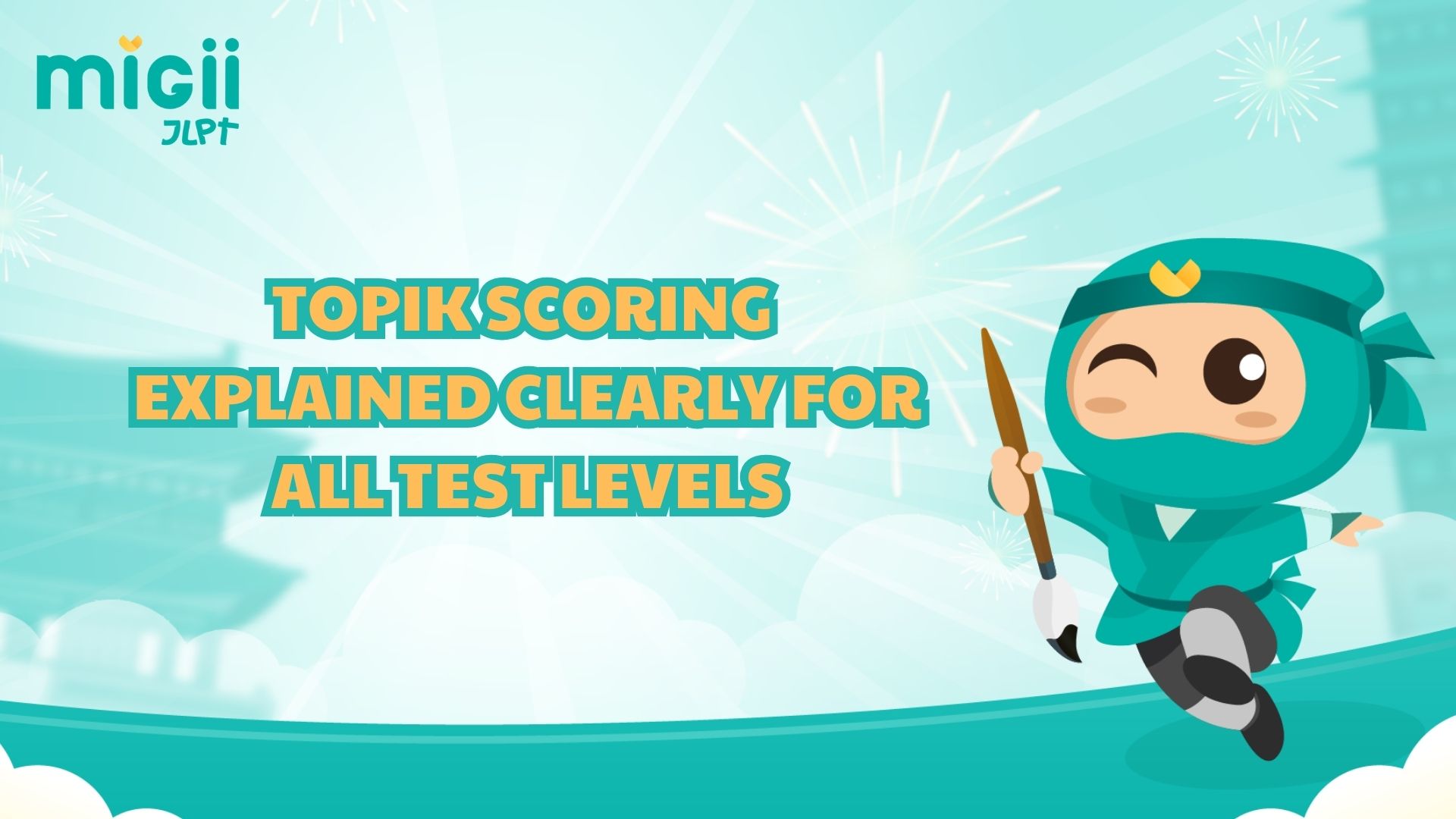TOPIK and KLPT are popular Korean language tests, each serving a distinct purpose. TOPIK is typically preferred for academic pursuits, whereas KLPT is geared toward work and employment opportunities. Migii offers a straightforward comparison of both exams, covering their format, scoring, and real-world use, helping learners choose the test that best fits their goals.
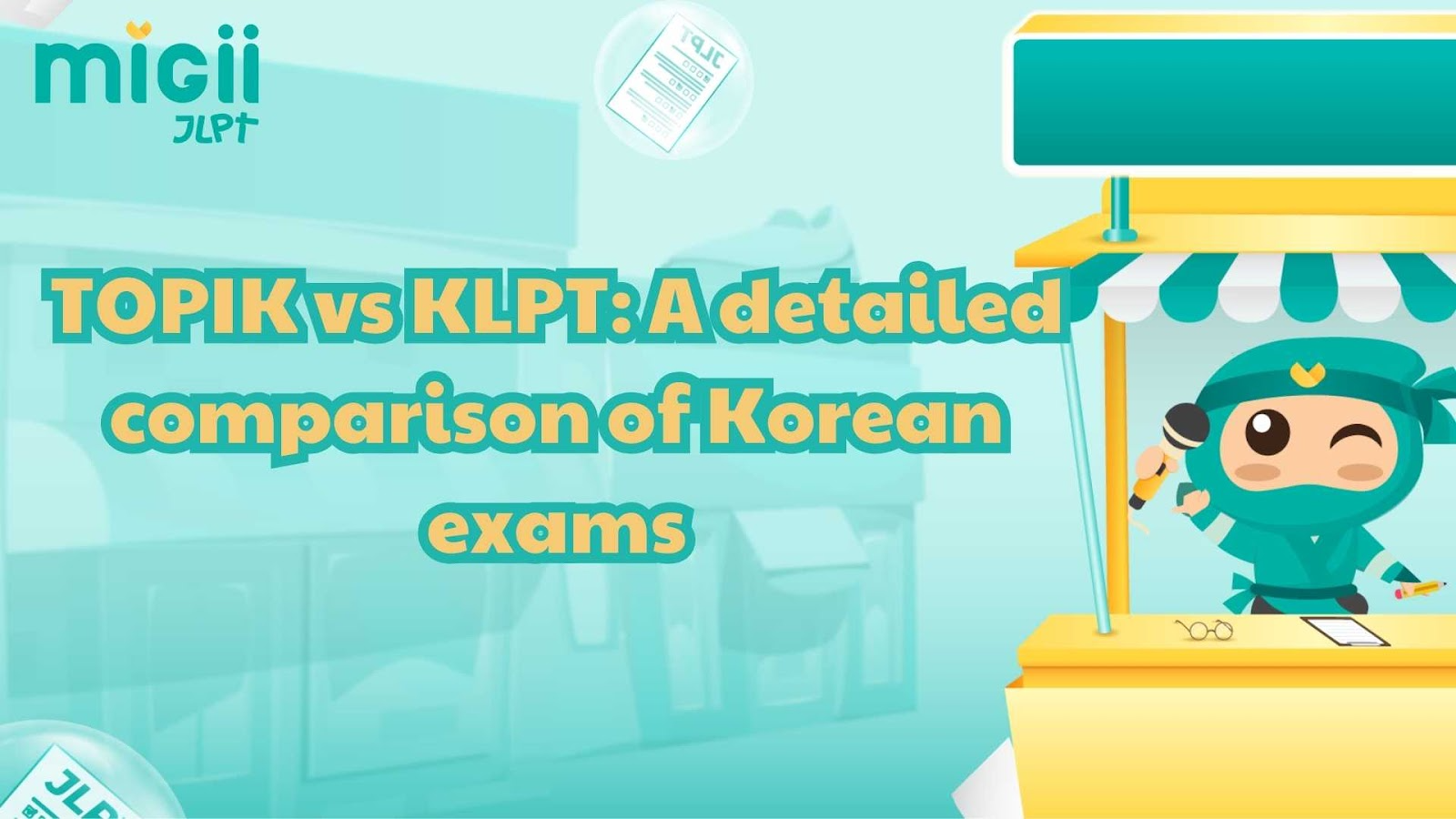
Introduction to TOPIK and KLPT
TOPIK and KLPT are the two main Korean language tests for non-native speakers. Although both measure your Korean skills, they serve different purposes, have different formats, and are used in different ways. Knowing these differences makes it easier for learners to pick the exam that fits their study or career plans.
What is TOPIK?
The Test of Proficiency in Korean (TOPIK) is a standardized exam for people who don’t speak Korean as their first language, including international students and overseas Koreans. It’s managed by the National Institute for International Education (NIIED) under Korea’s Ministry of Education.
The test measures your ability to use Korean in academic, work, and everyday situations, and it’s recognized in over 90 countries. TOPIK has two levels: TOPIK I for beginners and TOPIK II for intermediate to advanced learners, with each level testing different skills and difficulty.
TOPIK is suitable for a wide range of candidates, such as:
- Students preparing to study in Korea at undergraduate, graduate, or research levels
- University students majoring in Korean Studies who need certification to graduate
- High school students applying to Korean language programs at local universities
- Workers looking for career opportunities in Korean or multinational companies
- Former EPS employees planning to return to Korea for work
- Professionals at global companies like Samsung, Hyundai, LG, or Posco who gain advantages from a TOPIK certificate
- Individuals applying for marriage visas to Korea
- Language enthusiasts wanting to test and improve their Korean skills
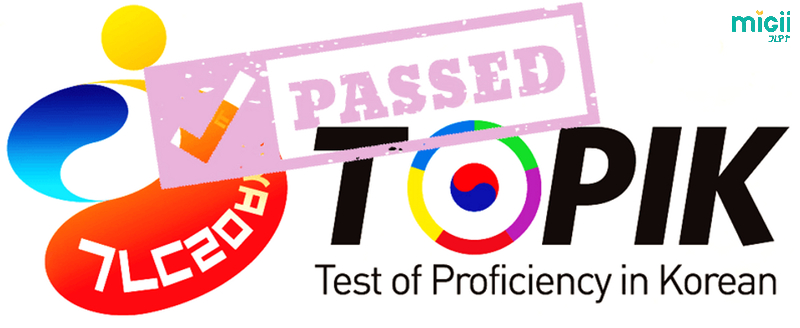 TOPIK results remain valid for a period of two years starting from the official announcement date
TOPIK results remain valid for a period of two years starting from the official announcement date
What is KLPT?
The Korean Language Proficiency Test (KLPT) is run by the Korean Language Society to assess practical Korean communication skills. Unlike TOPIK, KLPT emphasizes daily conversations and workplace language, making it more focused on real-life use. It also tests knowledge of Korean culture and society, helping foreign workers adjust more easily to life in Korea. The exam comes in two main formats:
- KLPT (EPS-TOPIK): A mandatory test for foreign workers applying to Korea under the EPS (Employment Permit System).
- B-KLPT: An exam designed for learners who want to demonstrate basic Korean communication skills.
KLPT is best suited for:
- Workers planning to join Korea’s labor force under the EPS program.
- Individuals preparing to live, study, or work in Korea long term.
- Non-Koreans seeking official proof of language ability to improve job opportunities in Korean-speaking workplaces
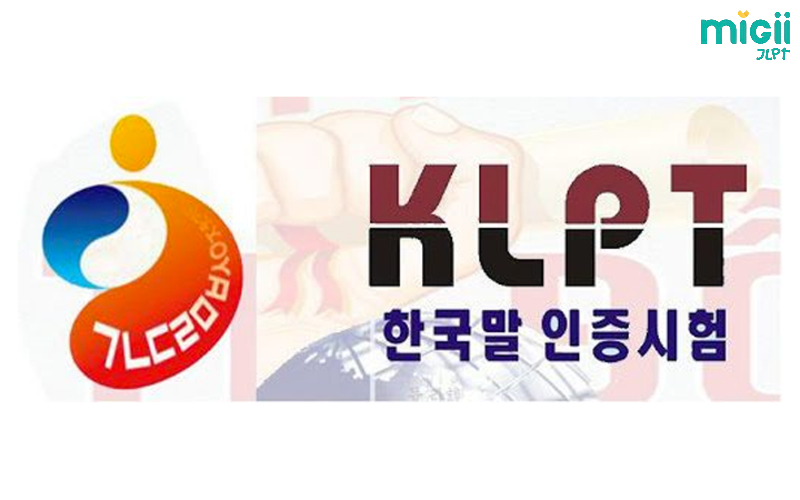 KLPT and EPS-TOPIK certificates are valid for 2 years from the date of result announcement
KLPT and EPS-TOPIK certificates are valid for 2 years from the date of result announcement
Test structure of TOPIK and KLPT
When comparing TOPIK vs KLPT, the exam structure plays a key role in deciding which test is more suitable. Each exam has its own levels, content focus, and duration tailored to different learning and career goals.
Test structure of TOPIK
The TOPIK test features two primary tiers: TOPIK I for entry-level learners and TOPIK II for those at intermediate to advanced proficiency. Each level follows a different structure and time allocation:
|
Category |
TOPIK I |
TOPIK II |
|
Test sections |
Listening (듣기), Reading (읽기) |
Listening (듣기), Reading (읽기), Writing (쓰기) |
|
Duration |
100 minutes (Listening 40, Reading 60) |
180 minutes (Listening 60, Writing 50, Reading 70) |
|
Number of questions |
70 questions (30 Listening, 40 Reading) |
104 questions (50 Listening, 50 Reading, 4 Writing tasks) |
|
Section details |
|
|
Test structure of KLPT
The KLPT evaluates practical Korean proficiency through multiple components, including listening, vocabulary, grammar, reading, and conversation. It is designed to reflect real-world communication and workplace language use.
Test structure of KLPT (EPS–TOPIK)
The EPS–TOPIK is a specialized form of the KLPT designed for foreign workers applying to Korea’s Employment Permit System. It emphasizes real-world Korean abilities essential for professional interactions and occupational safety.
|
Section |
Test content |
No. of questions |
Duration |
|
Listening |
Listen to short stories or dialogues and answer comprehension questions |
40 |
40 minutes |
|
Vocabulary |
Fill in the blanks with appropriate words; identify incorrect words |
15 |
70 minutes (combined with grammar & reading) |
|
Grammar |
Complete sentences with correct grammar structures; sentence connection tasks |
15 |
|
|
Reading |
Understand short stories; analyze detailed content of longer texts |
15 |
|
|
Conversation |
Common idiomatic expressions in daily communication; complete short dialogues |
15 |
|
|
Total |
200 |
110 minutes |
Test structure of B-KLPT
The B-KLPT (Basic Korean Language Proficiency Test) focuses on assessing two core language skills: Listening and Reading. The test includes 50 items that must be answered within a 90-minute timeframe:
- Listening: Includes questions based on images, short dialogues, and real-life conversational scenarios.
- Reading: Evaluates vocabulary, grammar usage, and comprehension of short passages.
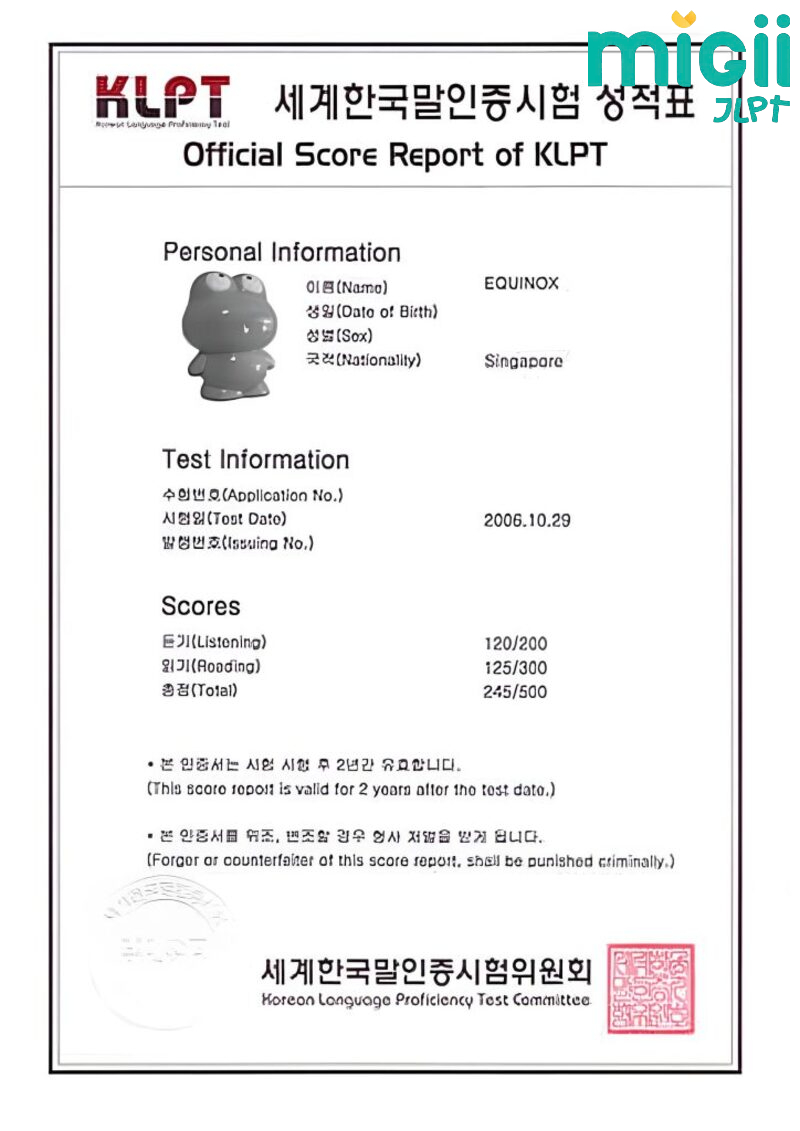
B-KLPT is practical for testing basic Korean skills but less recognized than TOPIK
Scoring system and result evaluation
The scoring system of TOPIK vs KLPT reflects different purposes: TOPIK emphasizes academic and professional language proficiency, while KLPT focuses on practical communication and workplace readiness. Below is the detailed scoring framework for TOPIK.
Scoring system of TOPIK
TOPIK is structured into two segments: TOPIK I for beginners and TOPIK II for intermediate to advanced learners, with each segment aligned to defined score ranges and proficiency descriptors.
|
TOPIK level |
Proficiency description |
Score range |
Maximum score |
|
TOPIK I (Beginner) |
|||
|
TOPIK 1 |
Recognizes written characters; can perform basic greetings |
80 – 139 |
200 |
|
TOPIK 2 |
Handles simple daily conversations |
≥ 140 |
200 |
|
TOPIK II (Intermediate & Advanced) |
|||
|
TOPIK 3 |
Communicates effectively in various situations |
120 – 149 |
300 |
|
TOPIK 4 |
Reads and writes fluently; eligible for major studies at Korean universities |
150 – 189 |
300 |
|
TOPIK 5 |
Speaks naturally with near-native intonation |
190 – 229 |
300 |
|
TOPIK 6 |
Demonstrates full fluency and deep understanding of Korean |
≥ 230 |
300 |
Scoring system of KLPT
The results of the KLPT are classified into six proficiency levels based on the total score. Each level reflects the candidate’s ability to use Korean in daily life and professional settings. To qualify for Korea’s Employment Permit System (EPS), candidates must achieve at least Level 4 (350 points or above), which demonstrates sufficient communication skills for both work and everyday situations.
|
KLPT Level |
Score range |
Description |
|
Level 1 |
200 – 245 |
Basic understanding of simple Korean words and expressions |
|
Level 2 |
250 – 295 |
Limited ability to handle short, routine exchanges |
|
Level 3 |
300 – 345 |
Can manage everyday communication with some difficulty |
|
Level 4 |
350 – 395 |
Adequate skills for work-related and daily interactions (minimum requirement for EPS) |
|
Level 5 |
400 – 445 |
Good command of Korean, able to engage in more complex conversations |
|
Level 6 |
450 – 500 |
Advanced proficiency, fluent communication in professional and social contexts |
Validity period and exam fees: TOPIK vs KLPT
Comparing the certificate validity and exam fees of TOPIK and KLPT helps candidates make informed choices based on their study or work goals. The table below provides a clear overview:
|
Criteria |
KLPT |
TOPIK |
|
Certificate validity |
2 years from the date of result |
2 years from the date of result |
|
Exam fee (South Korea) |
~24 USD |
TOPIK I: ~29 USD TOPIK II: ~40 USD |
|
Exam fee (Vietnam) |
~24 USD |
TOPIK I: ~23 USD TOPIK II: ~32 USD |
Detailed comparison between TOPIK and KLPT
Both TOPIK and KLPT are Korean language proficiency tests, but their recognition, structure, and purposes differ significantly. TOPIK is the globally recognized standard for academic, professional, and immigration needs, while KLPT mainly focuses on workplace communication skills. The table below highlights their key differences:
|
Category |
TOPIK (Test of Proficiency in Korean) |
KLPT (Korean Language Proficiency Test) |
|
Organizing body |
National Institute for International Education (NIIED) under the Korean Ministry of Education |
Korean Language Society (KLS) and affiliated institutions |
|
Main purpose |
|
|
|
Target candidates |
|
|
|
Test skills |
TOPIK I: Listening & Reading TOPIK II: Listening, Reading & Writing |
Listening and Reading (no Writing) |
|
Exam levels |
6 levels: TOPIK 1 → TOPIK 6 |
|
|
Recognition |
Official standard exam widely accepted by Korean universities, companies, and government bodies (visa, residency, citizenship) |
|
|
Validity period |
2 years |
2 years |
Conclusion: Which exam should you choose?
Choosing between TOPIK, EPS-TOPIK, and B-KLPT depends on your personal goals, whether for study, career advancement, immigration, or practical communication needs. The table below highlights the most suitable exam for each purpose:
|
Exam option |
Best for candidates who want to… |
|
TOPIK |
|
|
EPS-TOPIK |
Join the Employment Permit System (EPS) program for foreign workers who want to work in Korea under this scheme |
|
B-KLPT |
|
In conclusion, choosing between TOPIK vs KLPT depends on your goals: TOPIK is ideal for studying abroad, scholarships, and official immigration processes, while KLPT is more practical for foreign workers seeking job opportunities in Korea. Both exams are valid for 2 years but differ in recognition and application.
If you want a globally accepted qualification, TOPIK is the better choice, whereas KLPT fits labor and workplace needs. For effective preparation, try Migii TOPIK to boost your learning and exam success.
